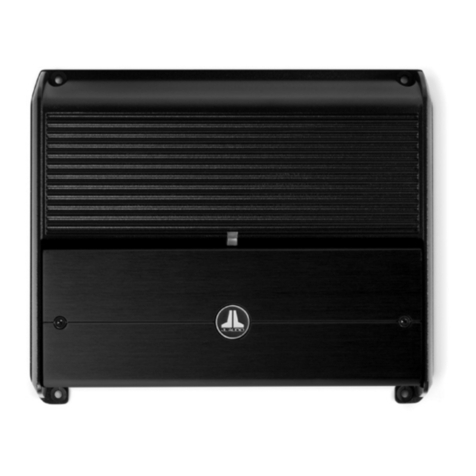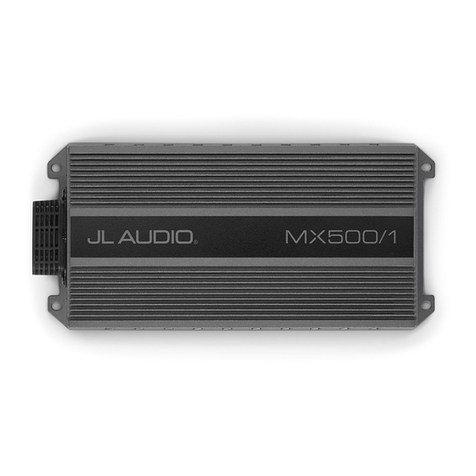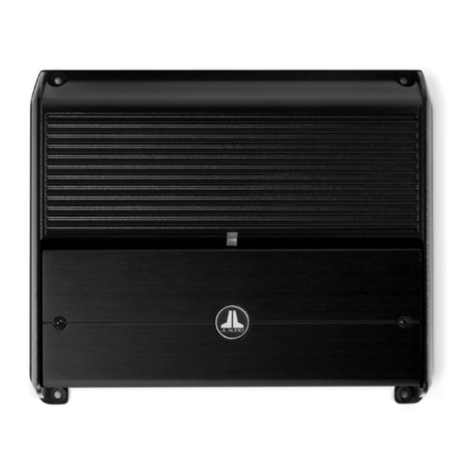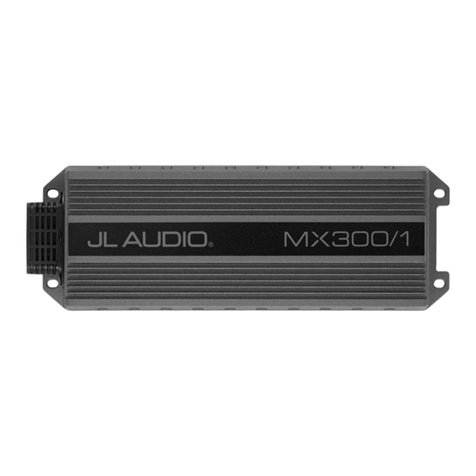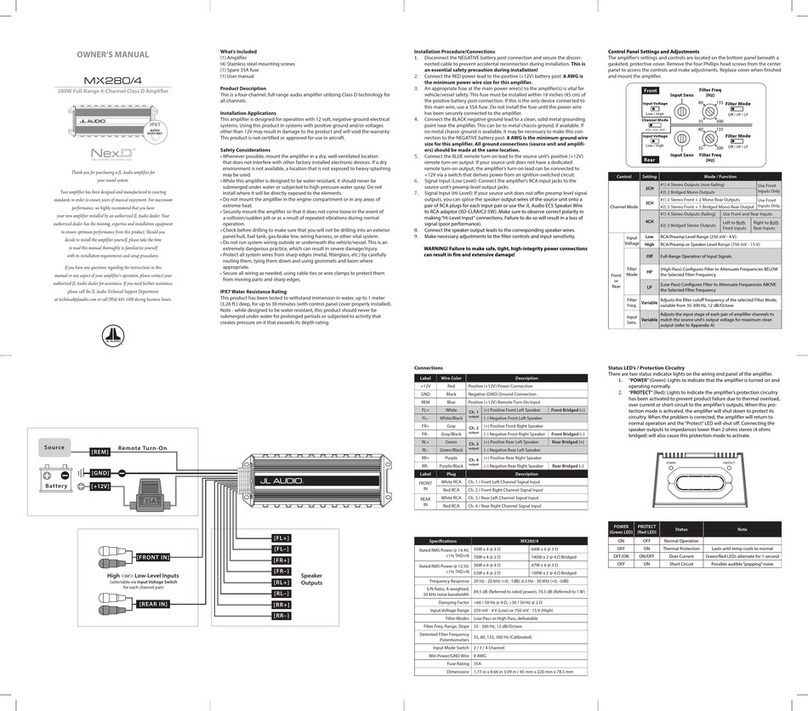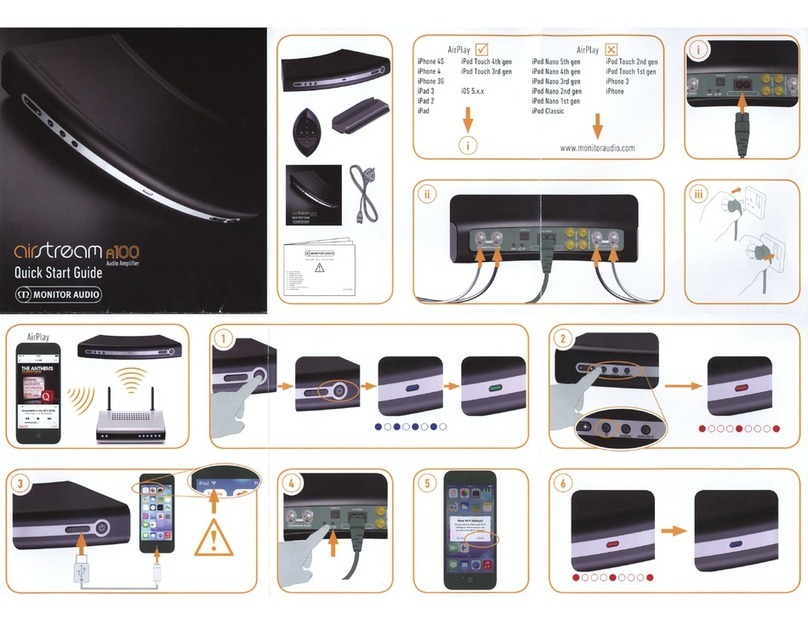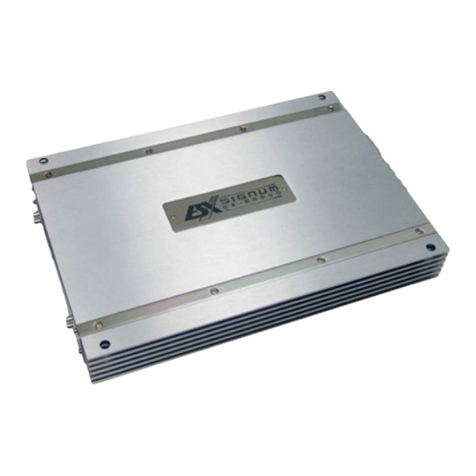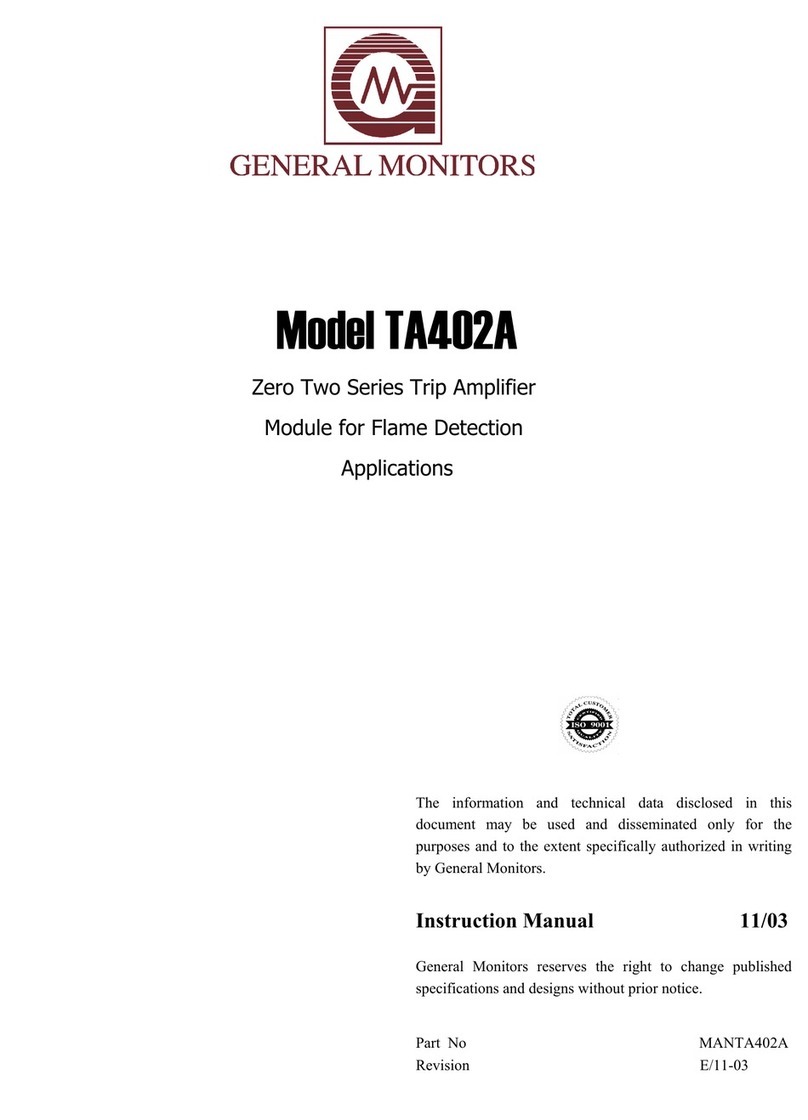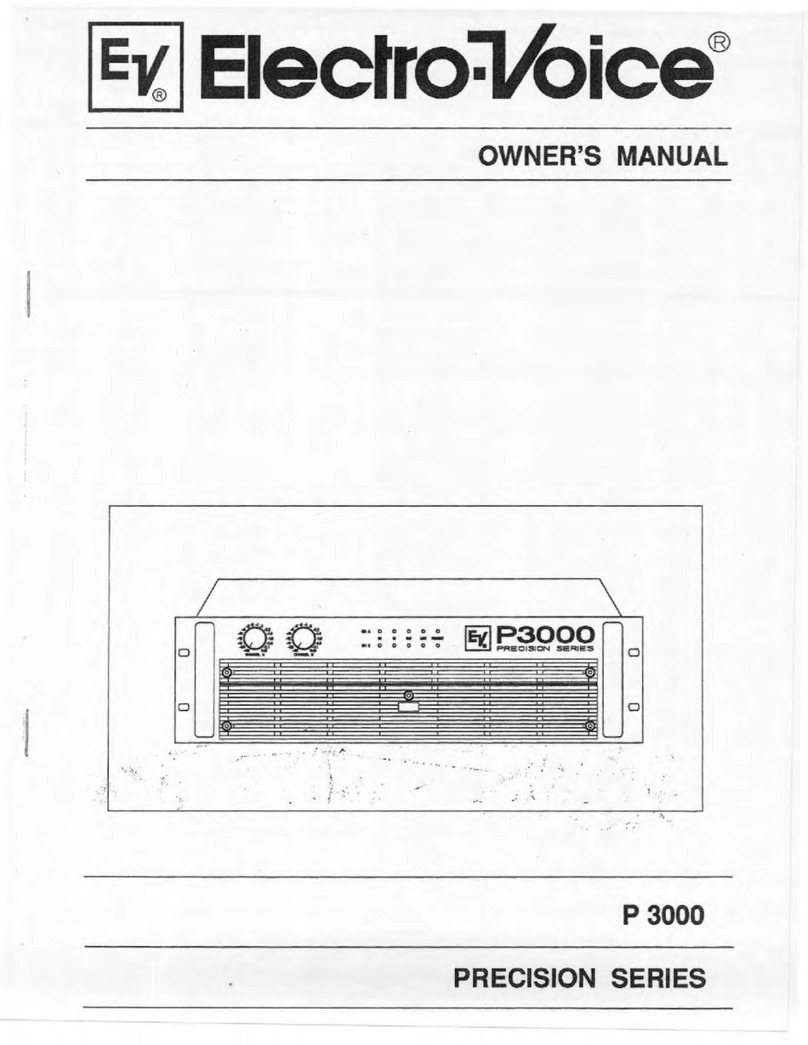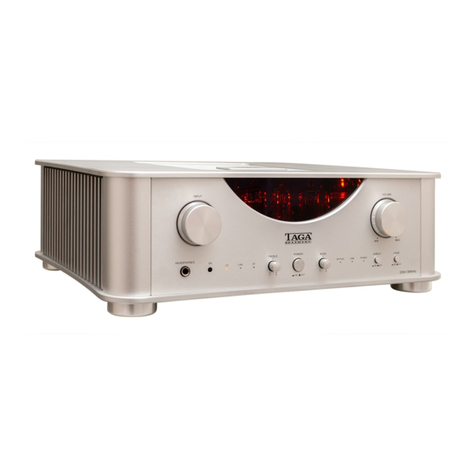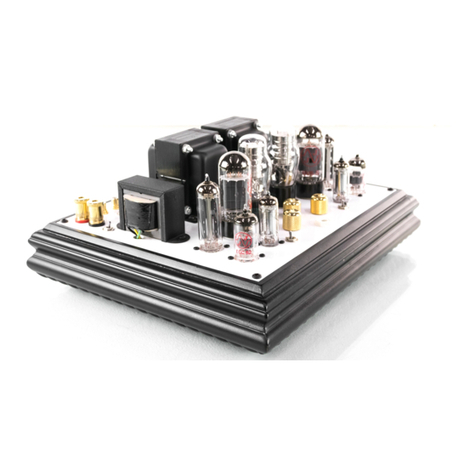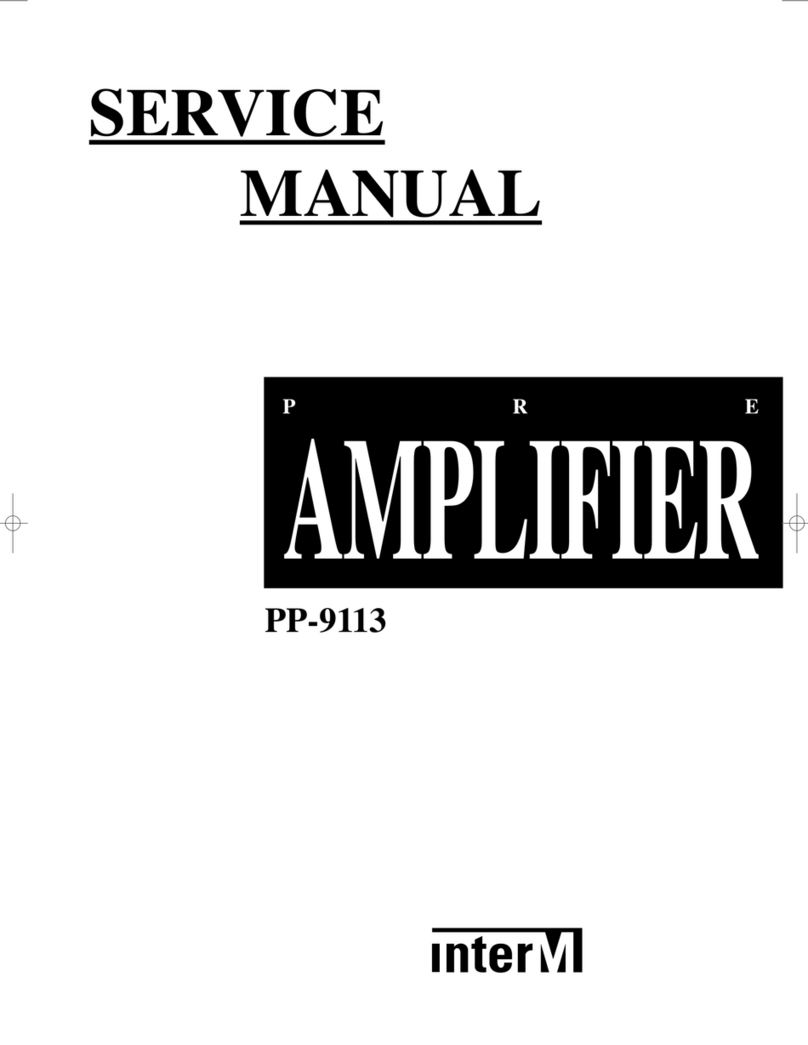NexD HX300/1 User manual

Thank you for purchasing a JL Audio amplifier for
your sound system.
Your amplifier has been designed and manufactured to exacting
standards in order to ensure years of musical enjoyment. For maximum
performance, we highly recommend that you have
your new amplifier installed by an authorized JL Audio dealer. Your
authorized dealer has the training, expertise and installation equipment
to ensure optimum performance from this product. Should you
decide to install the amplifier yourself, please take the time
to read this manual thoroughly to familiarize yourself
with its installation requirements and setup procedures.
If you have any questions regarding the instructions in this
manual or any aspect of your amplifier’s operation, please contact your
authorized JL Audio dealer for assistance. If you need further assistance,
please call the JL Audio Technical Support Department
at technical@jlaudio.com or call (954) 443–1100 during business hours.
OWNER’S MANUAL
300W Full-Range Class D Monoblock Amplier
What’s Included
(1) Amplifier
(4) Stainless steel mounting screws
(1) Spare 30A fuse
(1) User manual
Product Description
This is a full-range monoblock amplifier utilizing Class D technology that can be
used alone or in stereo pairs.
Installation Applications
This amplifier is designed for operation with 12 volt, negative-ground electrical
systems. Using this product in systems with positive ground and/or voltages
other than 12V may result in damage to the product and will void the warranty.
This product is not certified or approved for use in aircraft.
Safety Considerations
• Whenever possible, mount the amplifier in a dry, well-ventilated location
that does not interfere with other factory installed electronic devices. If a dry
environment is not available, a location that is not exposed to heavy splashing
may be used.
• While this amplifier is designed to be water-resistant, it should never be
submerged under water or subjected to high-pressure water spray. Do not
install where it will be directly exposed to the elements.
• Do not mount the amplifier in the engine compartment or in any areas of
extreme heat.
• Securely mount the amplifier so that it does not come loose in the event of
a collision/sudden jolt or as a result of repeated vibrations during normal
operation.
• Check before drilling to make sure that you will not be drilling into an exterior
panel/hull, fuel tank, gas/brake line, wiring harness, or other vital system.
• Do not run system wiring outside or underneath the vehicle/vessel. This is an
extremely dangerous practice, which can result in severe damage/injury.
• Protect all system wires from sharp edges (metal, fiberglass, etc.) by carefully
routing them, tying them down and using grommets and loom where
appropriate.
• Secure all wiring as needed, using cable ties or wire clamps to protect them
from moving parts and sharp edges.
Installation Procedure/Connections
1. Disconnect the NEGATIVE battery post connection and secure the discon-
nected cable to prevent accidental reconnection during installation. This is
an essential safety precaution during installation!
2. Connect the RED power lead to the positive (+12V) battery post. 8 AWG is
the minimum power wire size for this amplifier.
3. An appropriate fuse at the main power wire(s) to the amplifier(s) is vital for
vehicle/vessel safety. This fuse must be installed within 18 inches (45 cm) of
the positive battery post connection. If this is the only device connected to
this main wire, use a 30A fuse. Do not install the fuse until the power wire
has been securely connected to the amplifier.
4. Connect the BLACK negative ground lead to a clean, solid metal grounding
point near the amplifier. This can be to metal chassis ground, if available. If
no metal chassis ground is available, it may be necessary to make this con-
nection to the NEGATIVE battery post. 8 AWG is the minimum ground wire
size for this amplifier. All ground connections (source unit and amplifi-
ers) should be made at the same location.
5. Connect the BLUE remote turn-on lead to the source unit’s positive (+12V)
remote turn-on output. If your source unit does not have a dedicated
remote turn-on output, the amplifier’s turn-on lead can be connected to
+12V via a switch that derives power from an ignition-switched circuit.
6. Signal Input (Low-Level): Connect the amplifier’s RCA input jacks to the
source unit’s preamp level output jacks. You may run a stereo or a mono
signal into the inputs of the amplifier. The amplifier’s input section automat-
ically sums stereo signals to mono for the internal amplifier section. When
feeding a single, low-level RCA input connection, use a Y-adaptor splitter to
split the mono signal and connect it to both Left and Right RCA inputs.
7. Signal Input (Hi-Level): If your source unit does not offer preamp level signal
outputs, you can splice the speaker output wires of the source unit onto a
pair of RCA plugs for the input pair or use the JL Audio ECS Speaker Wire
to RCA adaptor (XB-CLRAIC2-SW). Make sure to observe correct polarity in
making “Hi-Level Input” connections. Failure to do so will result in a loss of
signal (poor performance).
8. Connect the speaker output leads to the corresponding speaker wires.
9. Make necessary adjustments to the filter controls and input sensitivity.
10. With the optional M-RBC-1 Remote Level Control (sold separately), you can
control the amplifier’s output level from the front of the vehicle/vessel. Con-
nect the M-RBC-1 to the amplifier’s harness-mounted RJ11 input jack. (Refer
to Appendix B)
WARNING! Failure to make safe, tight, high-integrity power connec-
tions can result in fire and extensive damage!
Control Panel Settings and Adjustments
The amplifier’s settings and controls are located on the bottom panel beneath a
gasketed, protective cover. Remove the four Phillips head screws from the center
panel to access the controls and make adjustments. Replace cover when finished
and mount the amplifier.
IPX6
WATER
RESISTANT
Label Wire Color Description
+12V Red Positive (+12V) Power Connection
GND Black Negative (GND) Ground Connection
REM Blue Positive (+12V) Remote Turn-On Input
SPK+ Lt. Blue Positive (+) Speaker Output
SPK– Lt. Blue/Black Negative (–) Speaker Output
Plug Description
White RCA Left Channel Signal Input
Red RCA Right Channel Signal Input
Remote Bass Control Jack RJ11 Input Jack for M-RBC-1 (sold separately)
Connections
Switch Setting Mode / Function
Input Voltage Low RCA/Preamp Level Range (250 mV - 4 V)
High RCA/Preamp or Speaker Level Range (1 V - 15 V)
Input Sens. Variable
Adjusts the input stage of the amplifier channels to
match the source unit’s output voltage for maximum
clean output (refer to Appendix A)
LP Filter
Off Full-Range Operation of Input Signals /
Defeats M-RBC-1 & Infrasonic Filter
On Low-Pass: Configures Filter to Attenuate Frequencies
ABOVE the Selected Filter Frequency
LP Filter
Freq. Variable Adjusts the low-pass filter cutoff frequency,
variable from 40-400 Hz, 24 dB/Octave
Infrasonic
Filter Variable Adjusts the high-pass filter cutoff frequency,
variable from 20-40 Hz, 12 dB/Octave
Bass Boost Variable
Boost-Only Bass Equalizer: Boost range from 0dB
(full-counterclockwise) to +12dB (full-clockwise),
centered at 43 Hz. (always active)
Output
Polarity
0Normal speaker polarity
180 deg. Polarity reversed 180 degrees
Speaker
M-RBC-1 (Sold Separately)
High <or> Low-Level Inputs
(selectable via Input Voltage Switch)
30A
Battery
Remote Bass Control Jack
Remote Turn-On
Source
[REM]
[SPK–]
[SPK+]
[+12V]
[GND]

Limited Warranty – Amplifiers (USA)
JL Audio warrants this product to be free of defects in materials and
workmanship for a period of two (2) years from the original date of purchase.
This warranty is not transferrable and applies only to the original purchaser
from an authorized JL Audio dealer. Should service be necessary under this
warranty for any reason due to manufacturing defect or malfunction, JL
Audio will (at its discretion), repair or replace the defective product with new
or remanufactured product at no charge. Damage caused by the following is
not covered under warranty: accident, misuse, abuse, product modification or
neglect, failure to follow installation instructions, unauthorized repair attempts,
misrepresentations by the seller. This warranty does not cover incidental or
consequential damages and does not cover the cost of removing or reinstalling
the unit(s). Cosmetic damage due to accident or normal wear and tear is not
covered under warranty.
Warranty is void if the product’s serial number has been removed or defaced.
Any applicable implied warranties are limited in duration to the period of the
express warranty as provided herein beginning with the date of the original
purchase at retail, and no warranties, whether express or implied, shall apply
to this product thereafter. Some states do not allow limitations on implied
warranties, therefore these exclusions may not apply to you. This warranty gives
you specific legal rights, and you may also have other rights, which vary from
state to state.
If you need service on your JL AUDIO product:
All warranty returns should be sent to JL Audio ’s Amplifier Service Facility
freight-prepaid through an authorized JL Audio dealer and must be
accompanied by proof of purchase (a copy of the original sales receipt). Direct
returns from consumers or non-authorized dealers will be refused unless
specifically authorized by JL Audio with a valid return authorization number.
Warranty expiration on products returned without proof of purchase will be
determined from the manufacturing date code. Coverage may be invalidated
as this date is previous to purchase date. Non-defective items received will
be returned freight-collect. Customer is responsible for shipping charges and
insurance in sending the product to JL Audio. Freight damage on returns is not
covered under warranty.
For Service Information in the U.S.A. please call
JL Audio Customer Service:
(9 5 4) 4 43 -11 00
9:00 AM – 5:30 PM (Eastern Time Zone)
JL Audio, Inc.
10369 North Commerce Pkwy.
Miramar, FL 33025
(Do not send product for repair to this address)
International Warranties:
Products purchased outside the United States of America are covered only
by that country’s distributor and not by JL Audio, Inc.
Appendix A:
Input Sensitivity Level Setting
Following the directions below will allow the installer to adjust the input
sensitivity of each amplifier channel pair in just a few minutes using equipment
commonly available in installation bays.
Necessary Equipment
• Digital AC Voltmeter
• CD or file with a sine-wave test tone recorded at 0 dB reference level in the
frequency range to be amplified for that set of channels (50 Hz for subwoofer
channels, 1 kHz for a midrange application). Do not use attenuated test tones
(-10 dB, -20 dB, etc.).
The Nine-Step Procedure
1) Disconnect the speakers from the amplifier’s speaker output connec-
tors (you need only disconnect one speaker wire).
2) Turn off all processing (bass/treble, loudness, EQ, etc.) on the source
unit, processors (if used) and amplifier. Set the source unit’s fader con-
trol to center position and its subwoofer level control to 3/4 of maxi-
mum.
3) Turn the “Input Sens.” control all the way down.
4) Set the source unit volume to 3/4 of full volume. This will allow for rea-
sonable gain overlap with moderate clipping at full volume.
5) Using the chart on this page, determine the target voltage for input
sensitivity adjustment according to the nominal impedance of the
speaker system connected to the amplifier outputs.
6) Verify that you have disconnected the speakers before proceeding. Play
a track with an appropriate sine wave (within the frequency range to
be amplified) at 3/4 source unit volume.
7) Connect the AC voltmeter to the speaker output connectors of the
amplifier. Make sure you test the voltage at the correct connectors
(+ and –).
8) Increase the “Input Sens.” control until the target voltage is observed
with the voltmeter.
9) Once you have adjusted the amplifier to its maximum low-distortion
output level, reconnect the speaker(s) and listen to the system. The
“Input Sens.” controls can now be adjusted downward if the amplifier
requires attenuation to achieve the desired system balance.
Specications HX300/1 and MHX300/1
Rated RMS Power @
14.4V, <1% THD+N 160W x 1 @ 4 Ω 220W x 1 @ 3 Ω 300W x 1 @ 2 Ω
Rated RMS Power @
12.5V, <1% THD+N 160W x 1 @ 4 Ω 200W x 1 @ 3 Ω 250W x 1 @ 2 Ω
Frequency Response 20 Hz - 12 kHz (+0, -1dB), 7 Hz - 14 kHz (+0, -3dB)
S/N Ratio, A-weighted,
20 kHz noise bandwidth 85 dB (Referred to rated power), 64 dB (Referred to 1 W)
Damping Factor >150 / 50 Hz @ 4 Ω, >75 / 50 Hz @ 2 Ω
Input Voltage Range 250 mV - 4 V (Low) or 750 mV - 15 V (High)
Filter Modes Low-Pass, defeatable
Filter Freq. Range, Slope 40 - 400 Hz, 24 dB/Octave
Detented Filter Freq.
Potentiometers 40, 80, 130, 300 Hz (Calibrated)
Infrasonic Filter 20 - 40 Hz, 12 dB/Octave
Bass Boost EQ 0 to +12 dB @ 43 Hz
Output Polarity 0 or 180 degrees
Remote Bass Controller M-RBC-1 (sold separately)
Min Power/GND Wire 8 AWG
Fuse Rating 30 A
Dimensions 1.77 in x 8.66 in 3.09 in / 45 mm x 220 mm x 78.5 mm
Appendix B
Remote Level Control
With the optional M-RBC-1 Remote Level Control (sold separately), you can
control the subwoofer volume from the front of the vehicle/vessel. The M-RBC-1
connects to the amplifier’s harness-mounted RJ11 input jack. When connected
to the amplifier, the Remote Level Control operates as follows. At full counter-
clockwise rotation, the audio will mute completely. At full clockwise rotation
the level will be the same as if the M-RBC-1 was not connected at all. In other
words, it operates strictly as a level attenuator. This control will not affect the
“Bass Boost” feature of the amplifier. Care should be taken to securely mount this
control in a manner that does not interfere with vehicle/vessel operation. When
setting the amplifier’s input sensitivity, the Remote Level Control should be
unplugged or at full clockwise rotation (maximum level).
Problem Possible Cause Solution
How to properly set
input sensitivity
Please refer to Appendix A to set the
input sensitivity for maximum, low-
distortion output.
Amplifier doesn’t
turn on
Faulty fuse Remove fuse and check with continuity
meter. Replace if necessary.
Poor connection
integrity
Check “+12V”, “Ground”, and “Remote”
leads for pinched wires; ensure tight
connections.
Insufficient
“Remote” input
Make sure there is a sufficient +12V
supply at the “Remote” connection; if
not a relay may be required.
Intermittent output,
fluctuates when I tap
on it or hit a bump
Poor connection
integrity
Make sure insulation has been properly
stripped back at connection points for
good contact area.
Make sure input connectors are making
good contact with input jacks of the
amplifier.
Distorted, attenuated,
or popping sound
Faulty speaker
connection (Short
Circuit / Over
Current Protection)
Inspect speaker wires for possible short-
circuit, either together or shorted to the
vehicle’s chassis ground.
Check the nominal load impedance at
the amplifier is equal to or greater than
2 ohms.
Output shuts off after
a while
Overheating
condition (Thermal
Protection)
Make sure amplifier mounting area has
adequate space for ventilation and heat
dissipation.
Troubleshooting
HX300/1 and MHX300/1
Nom. Impedance Target AC Voltage
4Ω 25.3 V
3Ω 25.7 V
2Ω 24.5 V
Important!
Do not increase any “Input Sens.” setting for any amplifier channel or
channel pair in the system beyond the maximum level established during
this procedure. Doing so will result in audible distortion and possible
speaker damage.
It will be necessary to re-adjust the “Input Sens.” for the affected channels if any
equalizer boost is activated after setting the “Input Sens.” with this procedure. This
applies to any EQ boost circuit, including source unit tone controls or EQ circuits. EQ
cuts will not require re-adjustment.
Status LED’s / Protection Circuitry
There are two status indicator lights on the wiring end panel of the amplifier.
1. “POWER” (Green): Lights to indicate that the amplifier is turned on and
operating normally.
2. “PROTECT” (Red): Lights to indicate the amplifier’s protection circuitry
has been activated to prevent product failure due to thermal overload,
over current or short-circuit to the amplifier’s outputs. When this pro-
tection mode is activated, the amplifier will shut down to protect its
circuitry. When the problem is corrected, the amplifier will return to
normal operation and the “Protect” LED will shut off. Connecting the
speaker outputs to impedances lower than 2 ohms will also cause this
protection mode to activate.
POWER
(Green LED)
PROTECT
(Red LED) Status Note
ON OFF Normal Operation
OFF ON Thermal Protection Lasts until temp cools to normal
OFF/ON ON/OFF Over Current Green/Red LEDs alternate for 1 second
OFF ON Short Circuit Possible audible “popping” noise
This manual suits for next models
1
Other NexD Amplifier manuals
Popular Amplifier manuals by other brands

Network Electronics ASA
Network Electronics ASA VikinXAV0110 user manual
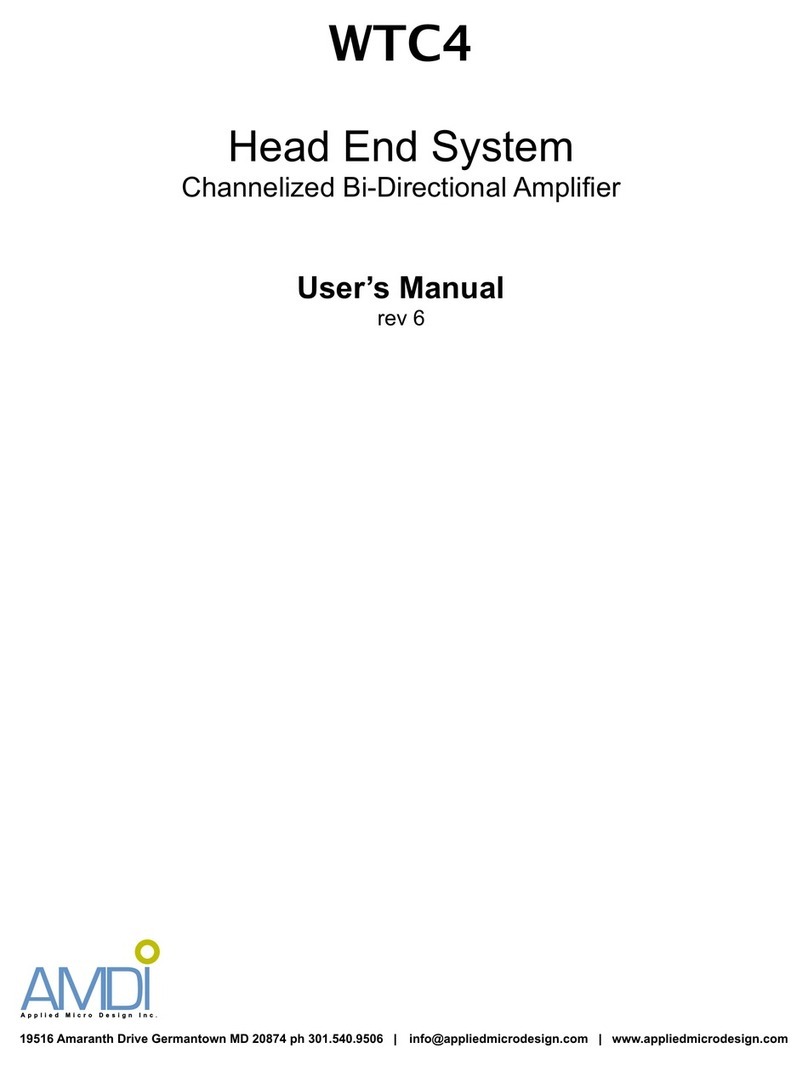
Amdi
Amdi WTC4 user manual

AUSTRALIAN MONITOR
AUSTRALIAN MONITOR HSv2 Series Installation and operation manual
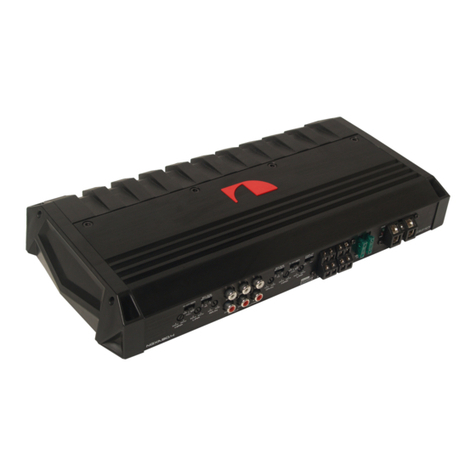
Nakamichi
Nakamichi NGXA80.4 user manual
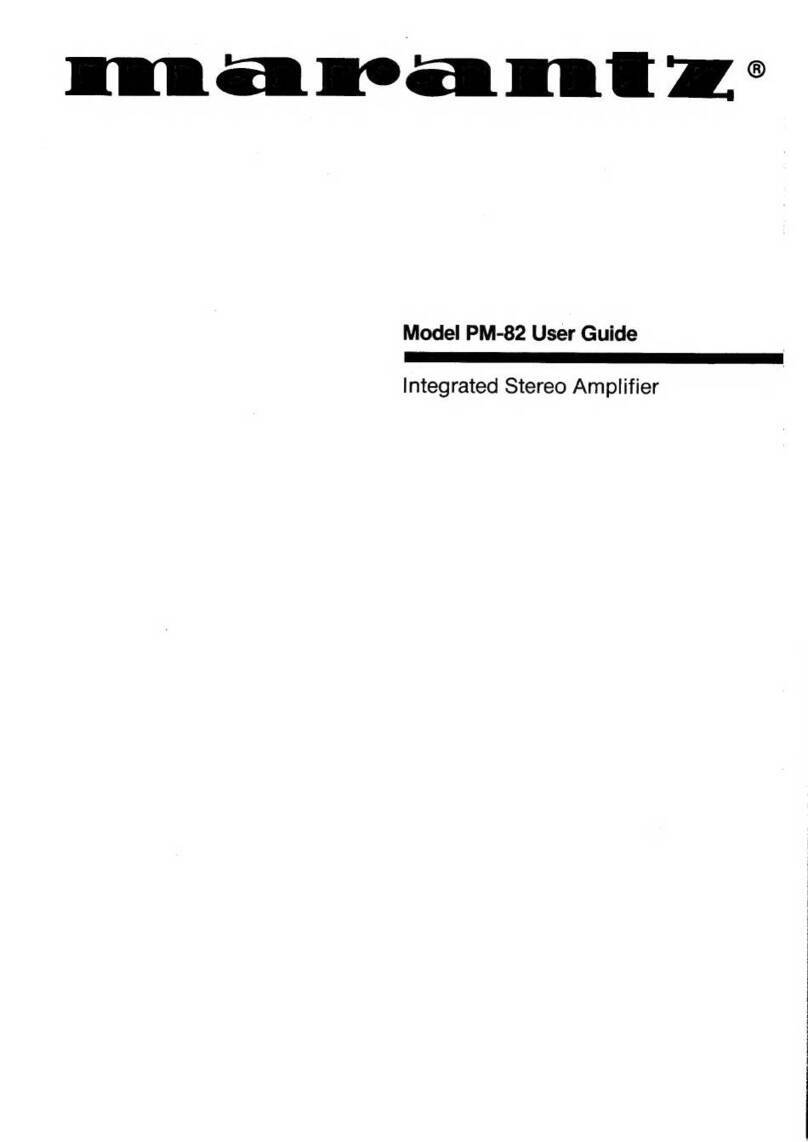
Marantz
Marantz PM-82 user guide
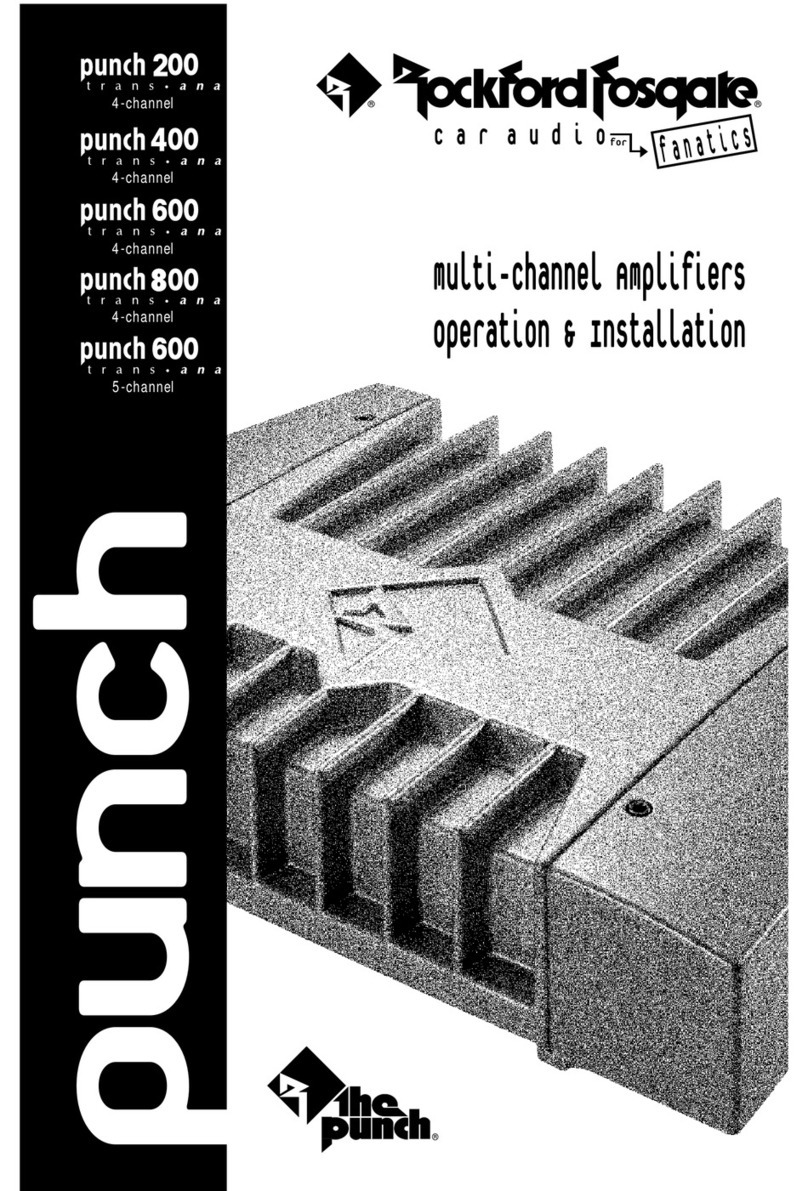
Rockford Fosgate
Rockford Fosgate PUNCH 200 Operation & installation
